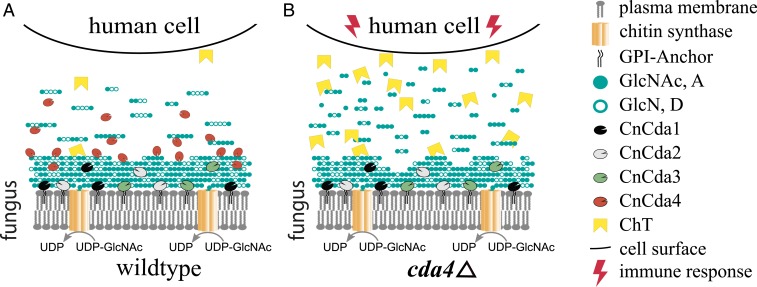Fig. 5.
Proposed role of CnCda1 to 3 and CnCda4 during the infection of human cells by the opportunistic pathogen C. neoformans. (A) Infections by the wild-type pathogen. (B) Infection by a CnCda4-deficient mutant. Cell wall chitin produced by chitin synthase CnChs3 together with CnCsr2 is partially deacetylated by the cell wall-associated enzymes CnCda1 to 3, whereas CnCda4 further deacetylates the outer layers as well as the released oligomers and small polymers until only the terminal sugar units remain acetylated. (A) With all four CDAs present, C. neoformans can successfully hide its presence from the human immune system. (B) With CnCda4 absent, highly acetylated oligomers and small polymers are recognized by the host and defense responses are initiated, including secretion of chitotriosidase (ChT), attacking the fungal cell wall and thereby releasing more oligomers and small polymers, intensifying the host immune response.

